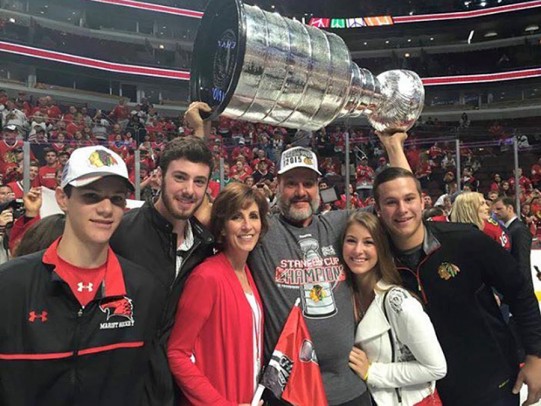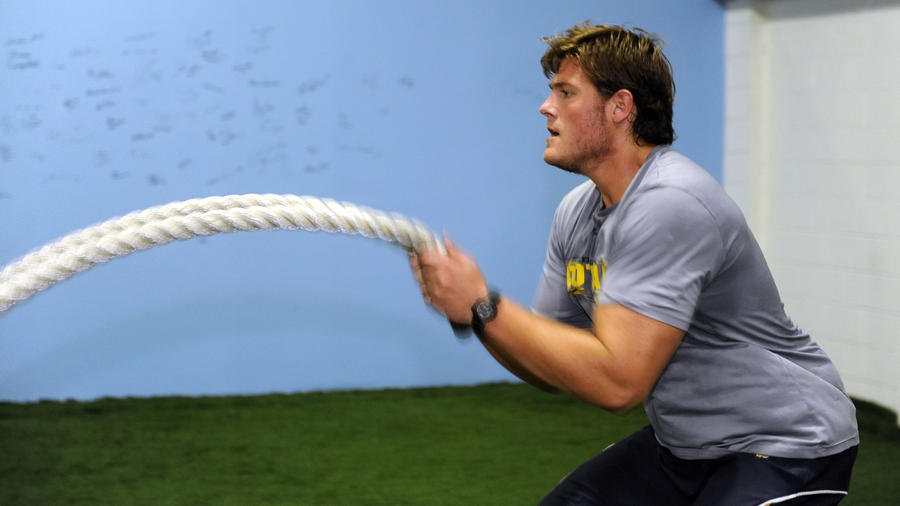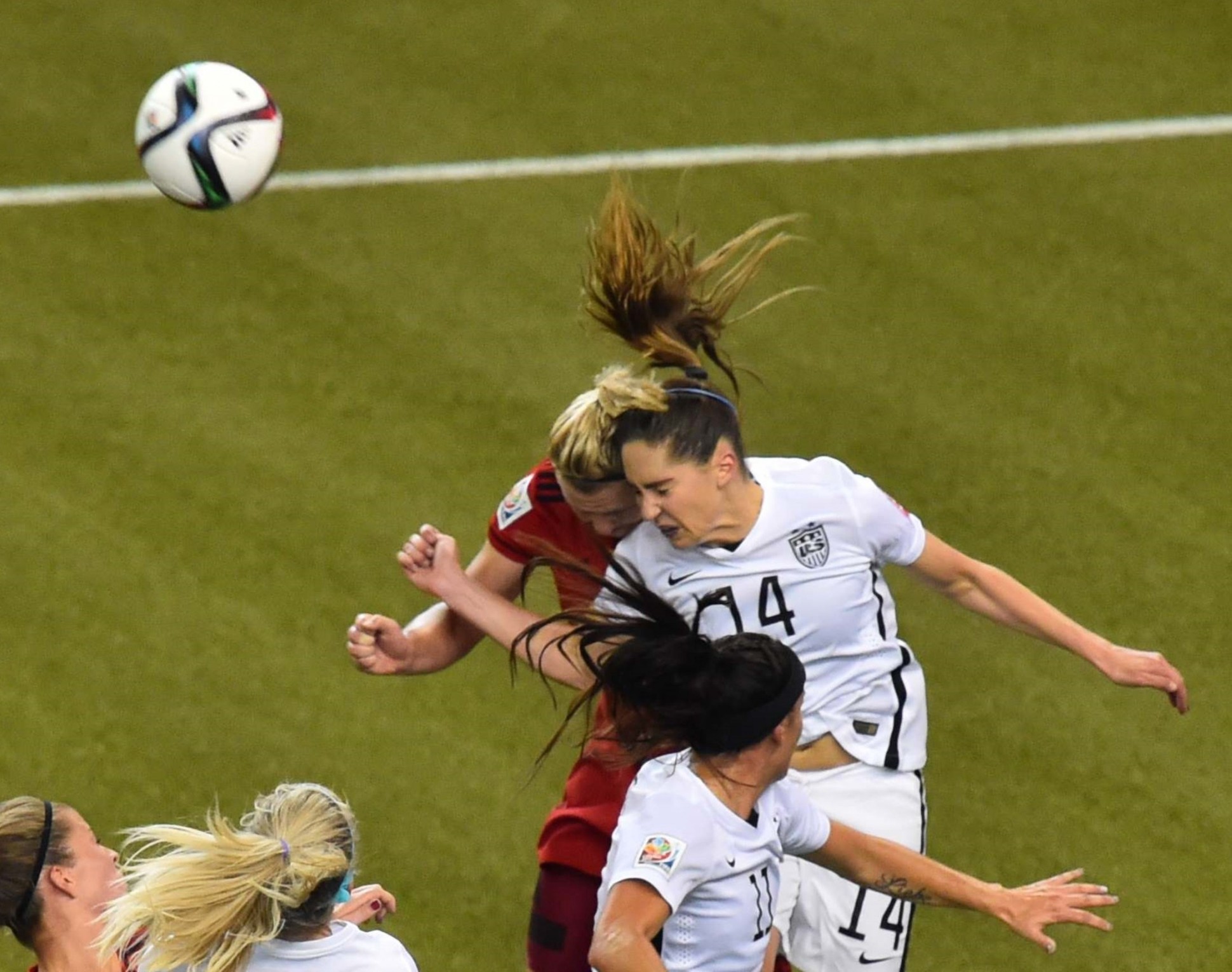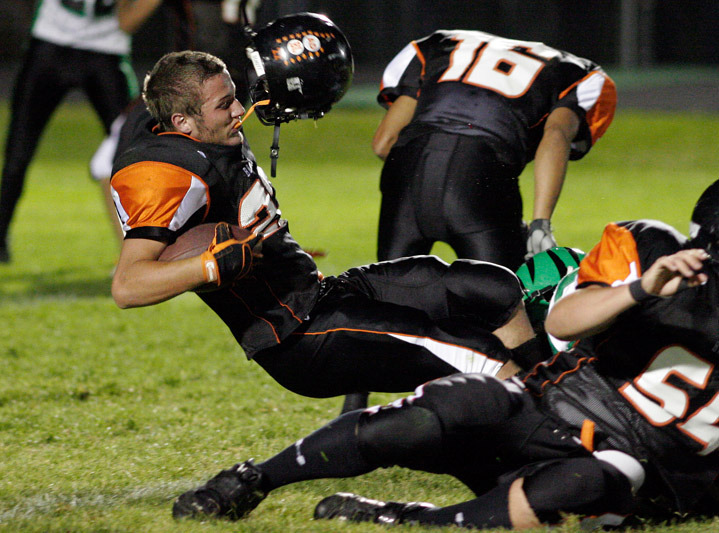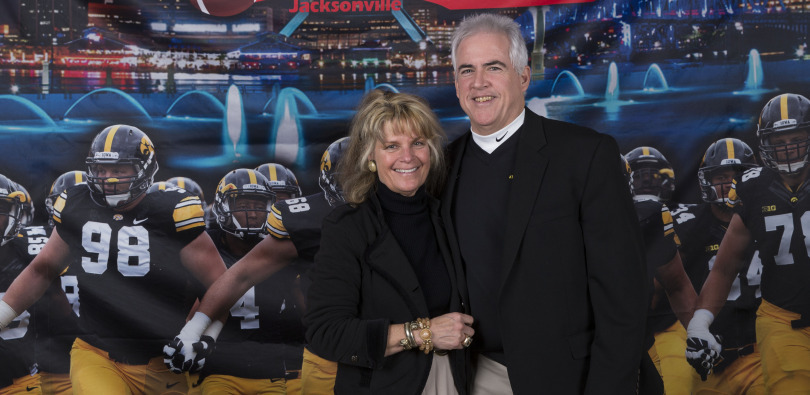
Sharon Winn has spent more than 30 years as an athletic trainer in the Denton school district and has seen the challenges that high school athletes face change dramatically. The most important and significant of those shifts involve the awareness and treatment of concussions.
Despite the pressure that the job entails, Ryan High School’s head trainer isn’t as stressed as one might suspect.
“It’s not as frustrating as you would think because I’m focused on the kids’ health and what’s best for them,” Winn said. “The parents and coaches want to know how long [a player might be out of action], but I don’t know that. It’s not in my magic bag of tricks. I can’t give a concrete answer because there isn’t one.
“It’s aggravating for the coaches, the athlete and the parents, especially for the ultra-competitive athlete. They want in.”
Winn recognizes that there is no fool-proof system for managing concussions and when athletes return to play. That gray area leaves athletic trainers sorting through emerging technology to find the best way to treat concussions, which rank among their biggest challenges.
The technology available for the diagnosis and treatment of concussions has improved dramatically. Even with a wealth of information, testing and treatment methods at their disposal, trainers aren’t taking lightly their decision of whether an athlete can return to play.
Trainers are in agreement that being cautious is in the best interest of athletes. That approach has trainers pulling athletes from games to protect players from themselves.
“It doesn’t matter what rule you have,” Winn said. “There are different interpretations. I don’t think there is any way you can say, that if this happens, then this is what to do. Different things arise. All trainers are in agreement, though, that if they show signs of a concussion they are coming out. It’s a state rule, not my rule.”
High school standards
The University Interscholastic League mandates that athletes must immediately be removed from play if they display symptoms of a concussion, providing trainers with a set of guidelines for how to handle injured athletes.
The UIL has a seven-day return-to-play protocol that mandates athletes cannot return unless they have experienced seven consecutive symptom-free days. If an athlete makes it five days but has a symptom on the sixth, the seven-day window restarts.
“With the UIL, if they exhibit symptoms, they are removed from the activity,” Winn said. “Sometimes in a huddle, especially in football, we’re watching for a hint. They won’t know the play or know what to do. They might say something outlandish. Our kids are getting good about pointing that out.”
Winn’s trepidation with allowing an athlete to return after a concussion is rooted in her understanding of long-term effects and varying symptoms from athlete to athlete.
“I don’t think we truly understand the long-term effects, and a lot of it has to do with the individual,” Winn said. “One kid may sprain an ankle and get right back up, but another kid may take weeks to get over it. Some kids can recover from concussion symptoms very quickly; some have the symptoms linger. I don’t know why.”
Trainers vs. doctors
Athletic trainers and doctors play critical roles in handling concussions and ensuring athletes receive the best care.
“We don’t diagnose,” said Renatta Delello, who is in her 10th year as Denton High School’s trainer. “Doctors diagnose. Trainers evaluate. It’s a big difference. As a trainer, if a kid comes to me with a bone sticking out, I would say it looks like it is broken but let’s go get X-rays.
“A parent could come back and say I was wrong, so we either evaluate and refer, or evaluate and treat. That’s with any injury, regardless. It doesn’t matter.”
The distinction between “diagnose” and “evaluate” is used to protect trainers who must make decisions about the immediate status of athletes.
“A concussion is a tricky injury because you can’t see it and athletes look at it as if it’s not a real injury,” said Kris Ring, who is in her 17th year as a trainer at Texas Woman’s University. “‘I might be a little foggy but there’s nothing wrong with me.’ Part of the vernacular in sports leads to that. They got their ‘bell rung’ or they’re ‘shook up.’
“We need to get rid of those. We need to call it a traumatic brain injury.”
Much like Delello and Winn, Ring makes athletes’ health and well-being her top priorities.
“At the moment of injury, your first concern is that patient’s outcome,” Ring said. “We want to rule out anything catastrophic first. I’ve made the shift that I’d rather be safe than sorry. If there is any question in my mind if it’s a concussion or not, it’s a concussion. In recent years, that has become my mantra. Ultimately my job as an athletic trainer is to protect my athletes.”
The primary fear trainers have with sending an athlete back into play is second impact syndrome. If a concussion is undiagnosed and untreated and a second concussion occurs before the athlete can properly heal, the athlete’s vulnerability skyrockets. The result can be deadly, even if the second concussion was less intense.
“I think we really have to look at these athletes as more than a number on our roster,” Ring said. “You have to think about the long-term consequences. I know I can’t live with myself if I put someone back into practice and something happens to them. I’m not going to do that.”
Trainers often take the lead role in the decision as to when players return to action.
“After the seven days, if there is something that is not quite right, we’ll even have a sit-down conversation with the coach and tell them that they are cleared by our standards but this is what we still see,” Delello said. “If things just aren’t going right, I’m just going to send you to the doctor.”
Facing challenges
on the college level
The NCAA has guidelines similar to the UIL’s regarding players being removed from activity if they display symptoms of a concussion.
The University of North Texas has had a protocol for concussions in place since 2001. Dustin Hill, UNT’s director of sports medicine, said the school is cautious with its athletes who have suffered concussions.
“What we have now makes for a better environment for our kids,” Hill said.
Ring said that TWU also is cautious about returning athletes to play but wishes there was more leeway within the NCAA guidelines governing the time frame in which athletes return.
The concern some have with UIL and NCAA rules is the concealment of head injuries by athletes and their families.
“The athletes don’t like this decision,” Ring said. “They don’t like it at all. Once the athlete knows this is the rule, will it make the athlete less likely to report? I’ve seen that a lot. They can’t stand the rule. Athletes by in large are bulletproof. … It’s brutal. When you look at parents, anytime you say brain injury, they think their kid will never play again.
“On the other side of the spectrum [for the parents], their kid’s college scholarship is riding on a game, so put them back in there. They’ve got pressures from all angles. Plus, with the internal pressure, they want to be on the floor and in the game.”
The pressure isn’t limited to the athlete and his or her family. It also can be on trainers who are pressured to clear athletes who suffer concussions to return to play. Trainers at UNT and TWU said they have the full support of coaches and administrators who put the health of athletes first.
“We’re fortunate that our [athletic director] is one that puts health and well-being first,” Ring said. “We’ve never had a problem. We’ve been very fortunate with her level of seriousness with health, and it trickles down from there. As a department, you have to have total buy-in.”
ORIGINAL ARTICLE: http://www.dentonrc.com/sports/sports-headlines/20150711-trainers-tasked-with-protecting-driven-athletes.ece


